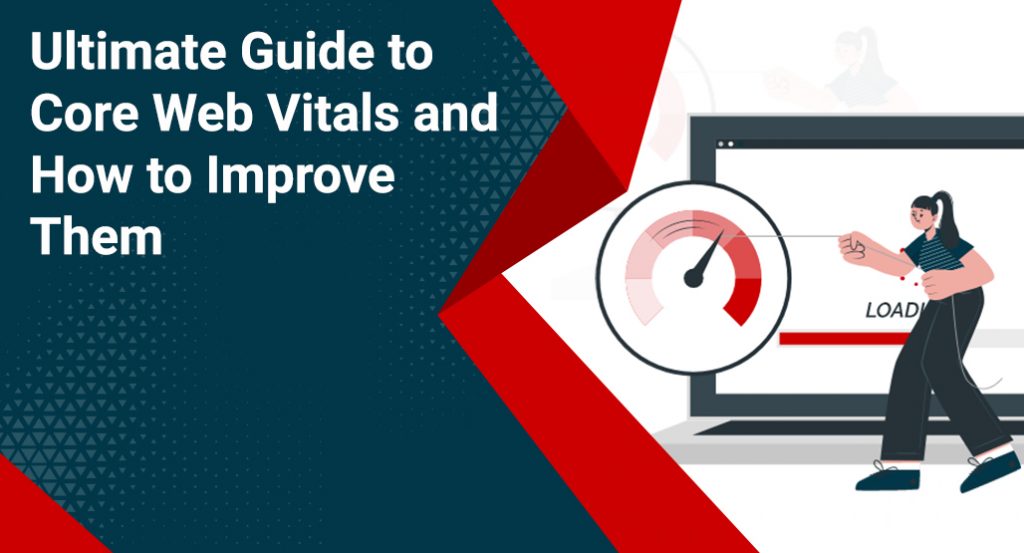Optimizing your website for the quality of user experience is vital to long-term success on the web. To help ensure the quality of your user experience, Google uses various signals like Core Web Vitals from a web page. Here’s a guide to what Google’s Core Web Vitals are and how we can improve them to boost website performance and page experience.

What are the Core Web Vitals?
Core Web Vitals (CWV) is a set of three specific web performance metrics that Google considers essential in a webpage’s overall user experience. Using these Google metrics, developers can understand how users experience a web page. As part of the Google page experience ranking factors, the Core Web Vitals can affect your site’s SEO performance.
Core Web Vitals score is different for desktop and mobile, so you have to work on both of them to improve the scores individually. There are three types of Core Web Vitals:
- Largest Contentful Paint (LCP)
- First Input Delay (FID)
- Cumulative Layout Shift (CLS)
Let’s see how each Core Web Vitals works and how you can improve your score.
Largest Contentful Paint (LCP)
Largest Contentful Paint is the metric that represents how fast a web page can load its largest content. It allows you to measure the loading time of the largest visual element of a site. You can check how long it takes for the largest image or text block to be rendered.
To offer a good user experience, your LCP score should be lower than 2.5 seconds. Higher than this means your site has poor performance that may negatively impact user experience. You need a constant stream of reliable data if you want to improve your Largest Contentful Paint for faster load times.
You can improve your LCP score by,
- Utilize Content Delivery Network (CDN) to deliver your content faster and reduce latency.
- Minimize large JS, CSS, and HTML files
- Reduce Server Response Time
- Optimize Your Images
- Improve your Time to First Byte (TTFB) metric
- Reduce third-party scripts
First Input Delay (FID)
First Input Delay (FID) is a web performance and user experience metric that measures how long the browser took to respond to the user’s first interaction with a page. You can understand how real users perceive the performance of page interactions with the help of First Input Delay core web vitals.
A good FID time would be below 100 milliseconds, the average FID is between 100 to 300 milliseconds and a bad FID is anything over 300 ms. A good FID score will help optimize website performance and improve search engine rankings and visibility so lowering your First Input Delay should really be at the top of your priorities.
You can improve your FID score by,
- Optimize Unused and Non-Critical JavaScript code
- Code-splitting
- Minifying JavaScript and Delaying its Execution
- Reduce request counts
- Reduce third-party scripts
Cumulative Layout Shift (CLS)
Cumulative layout shift measures how much the content on a webpage moves while the page is being downloaded and rendered. It gives information about your site’s overall layout stability. Bad CLS can create an overall negative experience for your users that’s why it should be minimized as much as possible.
A good cumulative layout shift score is anything below 0.1, between 0.1 and 0.25 needs improvement while anything above 0.25 is considered poor.
You can improve your CLS score by,
- Add height and width Attributes to Images and Videos
- Manage Dynamic Content
- Manage Space and Size for Ads, Embeds, and iFrames
- Optimize Fonts
In the end, it’s critical to not only check your website’s Core Web Vitals but to fix them as soon as possible. Improving these vital performances will enhance the user experience, improve SEO ranking, and contribute to site conversion goals. If you wish to create a website for your business, contact Swayam Infotech and schedule a meeting for a detailed discussion. The websites we developed would match the requirement of core web vitals.